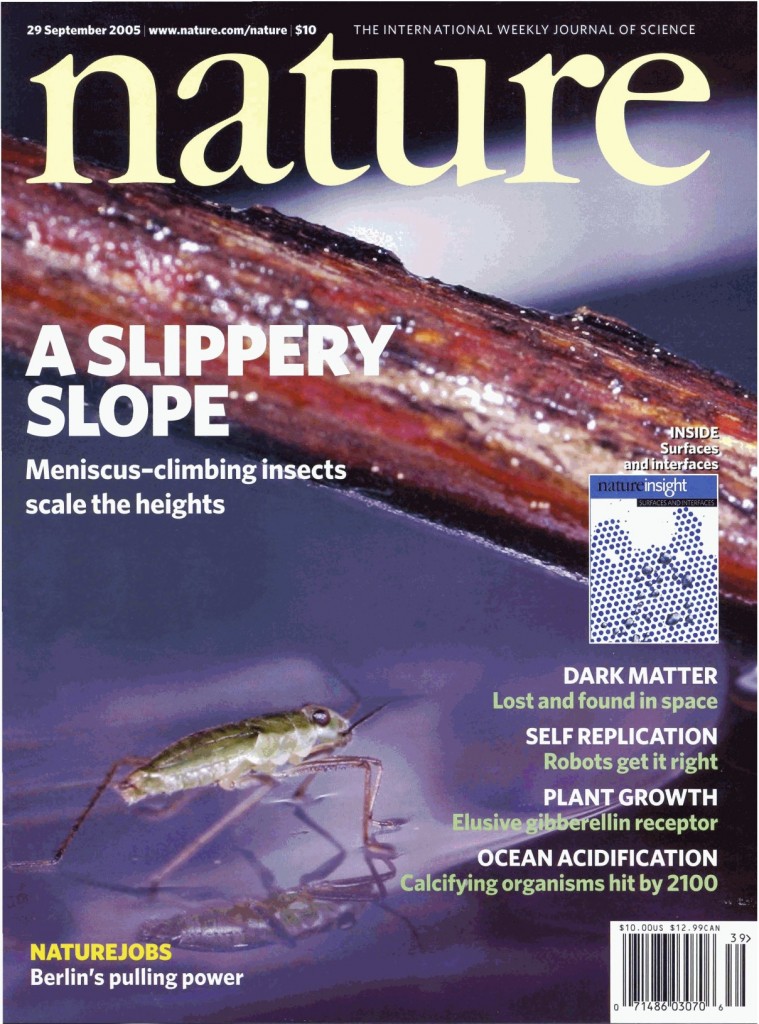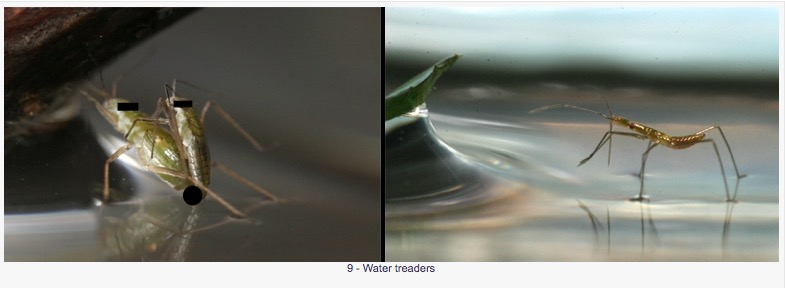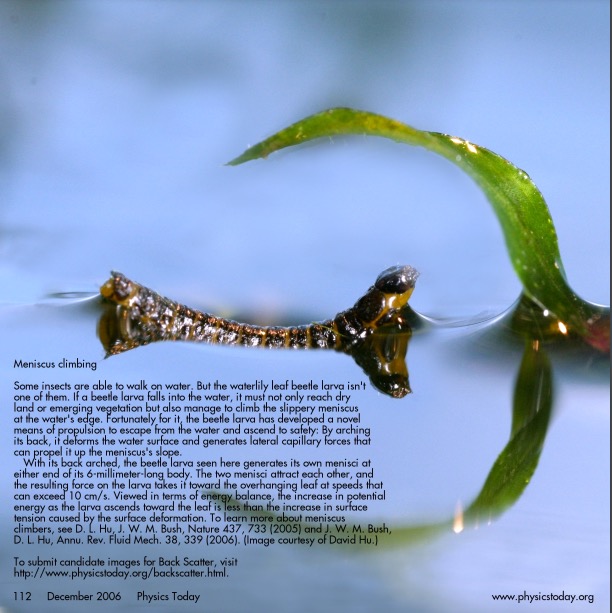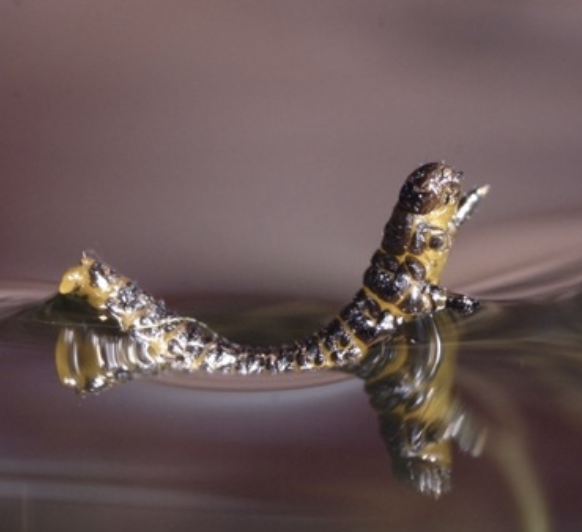
Wetting climbers
From our perspective, the surface of a pond appears to be flat; however, there is millimetric topography in the form of menisci that arise where the water surface meets land, floating objects or emergent vegetation (1). To millimetric water-walking creatures, these menisci can appear as frictionless mountains that they may be unable to climb using their ordinary means of propulsion.

The waterlily leaf beetle Pyrrhalta feeds upon the plant for which it is named (2). The larva is a poor swimmer, making travel between lily pads difficult. It uses a special meniscus-climbing technique to close in on emerging (left) and overhanging (right) vegetation.

3 ) The larva of Pyrrhalta is circumscribed by a contact line with the water surface. To climb the meniscus, the larva arches its back pulling up on the free surface with its head and tail.

4 ) The deformation of the water surface near the head and tail of the larva is clearly visible. In these images, it approaches an emerging wetted leaf.


Non-wetting climbers
Water-walking insects are generally covered by a dense mat of hair that renders them hydrophobic. Learning to climb the meniscus was a necessary adaptation for their terrestrial ancestors as they colonized the water surface. Modern water walking insects ascend to land in order to escape aquatic predators and lay their eggs.
5 ) The border between land and water may appear flat to us, but to water-walking insects, there may be significant topography. Here the water measurer Hydrometra treads carefully atop slippery rocks protruding from below the water surface.

6 ) Meniscus-climbing by the water treader Mesovelia. The water treader approaches a meniscus, from right to left. The deformation of the free surface is evident near its front and hind tarsi. While covered entirely with non-wetting hairs, the treader uses specialized wetting claws to pull up on the water surface.

7 ) To climb the slippery meniscus, water-walking insects need to get a running start. Only by running up the meniscus and using their specialized climbing mechanism as they slide back down can they generate the speed to reach land. Mesovelia (left) and the infant water strider (right) start their sprints at the bottom of the meniscus.

8 ) Floating weeds (left) are attracted to the meniscus, so on occasion, Mesovelia can hitch a ride to draw itself closer to land. On the right Mesovelia pauses before attempting a second climb.

9 ) Left, Two water treaders making haste to climb the meniscus. Right, the water measurer prepares to climb the mensicus by drying its non-wetting claws.

10 ) Water measurers Hydrometra known for their plodding speed on the water surface. Left, Hydrometra next to a downward sloping meniscus at the edge of a glass of water. Surface tension both supports Hydrometra‘s weight and keeps the water from spilling out the glass. Right, an upward sloping meniscus generated by an overhanging plant. To asend the plant, Hydrometra must ascend the slippery meniscus.

11 ) Hydrometra ascending the meniscus. By assuming a static posture in which it pushes down with its middle legs and pulls up with its front and hind legs, the creature rises to the top of the meniscus. Once at the top (right), it uses its claws to haul itself upward.

12 ) Meniscus-climbing postures assumed by insects. Shaded spots indicate the sense of the surface deflection, light being upwards and dark downwards. a, Mesovelia. b, Microvelia. c, Hydrometra. d, Pyrrhalta. e, Anurida. Figures courtesy of Brian Chan.

13 ) Meniscus-climbing by Anurida maritima. By pulling up on the water surface with its wetting ventral tube and pushing down with its nose and tail, Anurida can deform the water surface. Assuming this static postures allows Anurida to ascend to land and to form colonies of 50-100 individuals.

14 ) To travel between two colonies, Anurida combines walking with meniscus-climbing. Meniscus-climbing is recognized by the upward deformation of the free surface, as seen around the individual on the left.

See paper here: Hu & Bush, Nature (2005)
SELECTED PRESS: NY Times , National Geographic , PhysicsToday-Backscatter

“ I was stunned by the perfection of the insects.“
– Pablo Neruda
